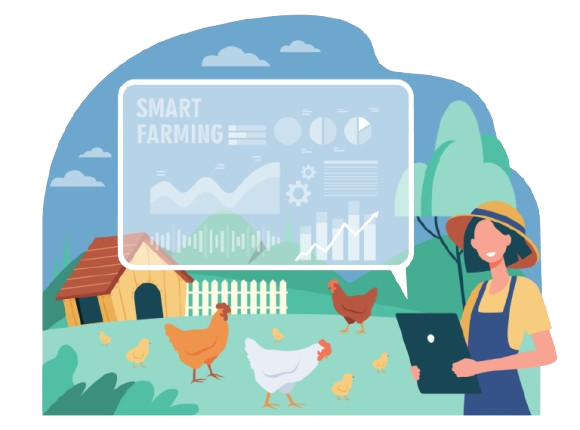The Ultimate Guide to Farm Business Management Software 2025

Table of Contents:
Intro
- What is Farm Business Management Software?
- How Farm Business Management Software Benefits Agricultural Enterprises
- Challenges of Implementing Farm Business Management Software
- Conclusion
Managing a farm is no small feat. From tracking finances and inventory to analyzing yields and weather conditions, farmers juggle multiple responsibilities daily. As agriculture evolves with technological advancements, farm business management software has become a game-changer for modern farmers and agribusinesses. But what exactly is this software, and how can it revolutionize farm operations? This guide explores its benefits, challenges, and key considerations to help farmers make informed decisions.
What is Farm Business Management Software?
Farm business management software is a digital tool designed to help farmers streamline operations, manage resources efficiently, and make data-driven decisions. It consolidates various aspects of farm management, including:
- Financial tracking: Budgeting, expenses, and revenue management.
- Crop and livestock monitoring: Tracking yields, soil health, and animal welfare.
- Inventory and supply chain management: Monitoring equipment, seeds, fertilizers, and distribution logistics.
- Compliance and reporting: Ensuring adherence to agricultural regulations and standards.
By integrating these functions into a single platform, farmers can increase productivity, reduce waste, and enhance profitability.
How Farm Business Management Software Benefits Agricultural Enterprises
1. Enhanced Decision-Making with Data Analytics
Farming is no longer just about intuition—it’s about insights. Advanced analytics provide real-time data on weather conditions, soil moisture levels, and financial performance, helping farmers make strategic decisions.
2. Cost Efficiency and Financial Management
With detailed budgeting tools, expense tracking, and revenue forecasts, farmers can better manage cash flow and optimize investments. By automating financial processes, the software reduces accounting errors and helps secure better loan terms.
3. Improved Crop and Livestock Management
Farmers can monitor crop health, irrigation needs, and pest control strategies, ensuring higher yields with fewer resources. For livestock farming, the software tracks animal health records, feeding schedules, and breeding cycles.
4. Streamlined Inventory and Supply Chain Operations
Efficient inventory management prevents shortages or overstocking of essential supplies. Additionally, integrated logistics tracking helps optimize distribution, ensuring timely deliveries and reducing wastage.
5. Regulatory Compliance and Sustainability
Governments and agricultural bodies enforce strict guidelines for farm operations. Farm business management software helps maintain accurate records for audits, ensures compliance with safety standards, and supports sustainable farming practices.
Challenges of Implementing Farm Business Management Software
- Initial Investment: The cost of software and required hardware can be a barrier for small-scale farmers.
- Technical Learning Curve: Some farmers may find it challenging to transition from traditional methods to digital platforms.
- Data Security Concerns: Storing sensitive farm and financial data online raises concerns about cybersecurity threats.
- Internet Connectivity Issues: Rural farms with limited internet access may struggle with cloud-based software solutions.
Conclusion
Farm business management software is transforming agriculture, making farm operations more efficient, data-driven, and sustainable. While there are challenges in adoption, the benefits far outweigh the drawbacks, especially for those looking to optimize productivity and profitability. As technology continues to evolve, embracing digital solutions will be key to future-proofing farms and ensuring long-term success.
